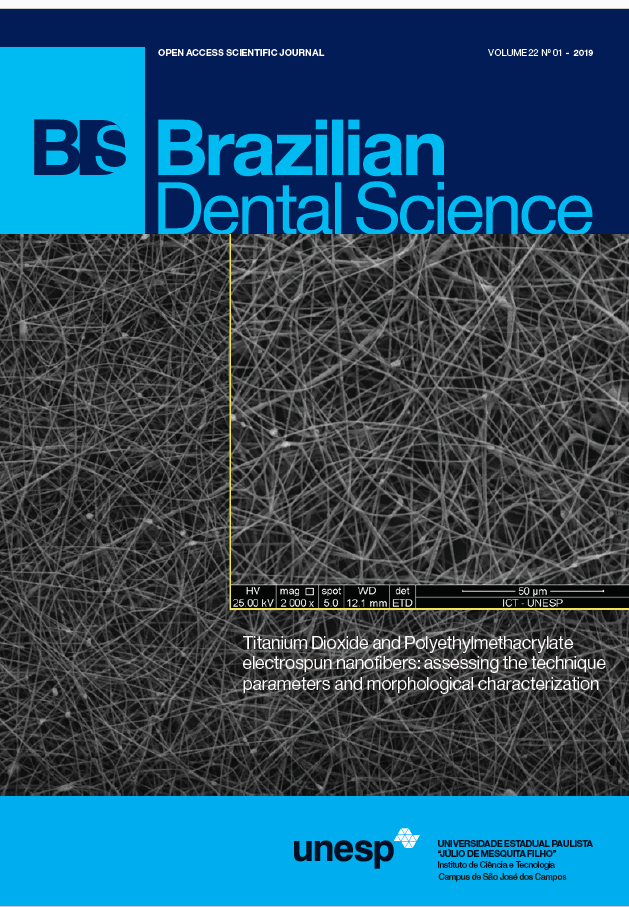Effect of different root dentin pretreatment protocols on the bond strength of fiber posts cemented with core buildup material
DOI:
https://doi.org/10.14295/bds.2019.v22i1.1620Abstract
Objective: The purpose of the study was to evaluate the push out bond strength of fiber posts -after cementaion with core build up material and dentin pretreatment using different adhesive protocols- in different root regions. Material and Methods: 28 endodonticaly treated human premolars were divided into 4 groups. The post spaces were treated with 1 of 4 different dentin bonding protocols: total etch light cured adhesive, solobond m; total etch dual cured adhesive, Excite f DSC; self-etching light cured adhesive, single bond universal; or self-etching dual cured adhesive, futura bond dc. Fiber posts, were luted with dual cured core material. The roots were cut into 2-mm-thick sections, in cervical, middle, and apical regions. Push-out tests were performed with a universal testing machine, and bond strength values (MPa) were calculated. Data were analyzed with 1- and 2-way analysis of variance and Tukey multiple comparison tests (a=.05). Failure modes were examined under stereo microscope. Results: The highest mean bond strength values were obtained for self-etch dual cured adhesive, (9.69 MPa). The Total etch light cured adhesive (2.81 MPa) showed the lowest bond strength. Self-etch light-polymerized and total etch dual-polymerized adhesives provided similar bond strengths (5.37, 5.72 respectively). The regional bond strength values were reduced significantly in apical post space (P<0.01). The most predominant failure type was mixed failure followed by adhesive failure. Conclusion: Dentin pretreatment using self-etch dual cured adhesives prior to fiber posts cementation offers a high bond strength. While using total-etch light cured adhesives is not recommended due to the low bonding quality.
Keywords
Dentin; Bond strength; Fiber posts; Core buildup material; Adhesive protocols; Pretreatment.
Downloads
Downloads
Additional Files
Published
How to Cite
Issue
Section
License
Brazilian Dental Science uses the Creative Commons (CC-BY 4.0) license, thus preserving the integrity of articles in an open access environment. The journal allows the author to retain publishing rights without restrictions.
=================




























